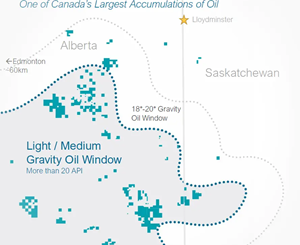(Bloomberg) – Oil traders are preparing for an oil-price surge when trading reopens, with the focus on whether Tehran’s retaliation to U.S. airstrikes will lead to a disruption in crude flows that have been largely unaffected so far.
After a wild week, Brent futures have jumped 11% since Israel attacked its nemesis, but with sharp moves up and down from one day to the next. The rally is expected to restart on Monday, after the U.S. assault dramatically raised the stakes in a region that accounts for a third of global oil output.
Exactly whether any increase can be sustained will depend on Iran’s next moves. So far in the conflict, there’s been little sign of disruption to oil flows from the region, and if anything Iranian exports have risen since Israeli attacks began on June 13. Several traders said that while they expected a price rise at the open, it will take actual disruption to sustain it.
“Now that U.S. has made its move, the ball is in Iran’s court,” said Harry Tchilinguirian, group head of research at Onyx Capital Group. “The course they choose for retaliation will dictate which way prices will go.”
One of traders’ key concerns is about disruption in the Strait of Hormuz. The maritime chokepoint at the mouth of the Persian Gulf is a vital conduit for about a fifth of the world’s oil, not just from Iran, but also key members of the Organization of the Petroleum Exporting Countries.
At one stage last week, it appeared more a question of when than if the U.S. would intervene. That appeared to shift late Thursday, when Trump said he’d mull his decision for two weeks. Then, in the early hours of Sunday, Iranian time, he announced that Fordow, Natanz, and Isfahan were struck, and described a “payload of BOMBS” dropped on Fordow, a key location of uranium enrichment.
Hours later, in a televised address to the nation, the U.S. president said the strikes had “totally obliterated” the trio of targets, while also threatening further military action if Tehran did not make peace with Israel.
“Much depends on how Iran responds in the coming hours and days — but this could set us on a path toward $100 oil, if Iran responds as they have previously threatened to,” said Saul Kavonic, an energy analyst at MST Marquee. “This US attack could see a conflagration of the conflict to include Iran responding by targeting regional American interests that include Gulf oil infrastructure in places such as Iraq, or harassing passage through the Strait of Hormuz.”
The fate of oil matters because it drives fuel prices and inflation — something Trump said he would quell when he was campaigning for office. In times of extreme volatility, shortages of oil have even precipitated recessions.
From frenzied options markets, to soaring freight and diesel pricing, to a radical redrawing of crude’s pivotal forward curve, all of that volatility is expected to intensify in the week ahead.
“The market wants certainty, and this now firmly pushes the U.S. into the Middle East theater,” said Joe DeLaura, global energy strategist at Rabobank and a former trader, adding prices were now expected to rise when oil reopens. “But I think that this means the U.S. Navy will be tasked to keep the Strait open,” he said, adding prices could head into the $80-to-$90 a barrel range.
This article was originally posted at www.worldoil.com



Be the first to comment